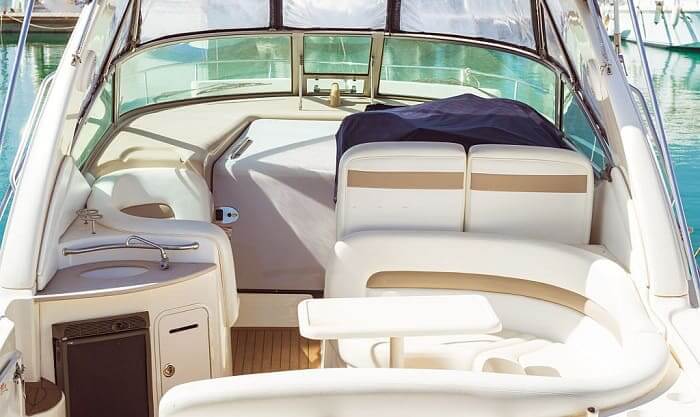Marine textiles are used on the open sea to shield boats’ occupants from the sun, wind, waterproof ring doorbells, and surf. They are also used to safeguard boats that are being stored at the pier or in dry docks. Boat owners give careful consideration to the design of their enclosures and boat tops, but frequently forget to consider one crucial aspect: the materials they are composed of.
Unfortunately, many boat owners will try to cut costs by using non-marine quality items. Almost invariably, that choice will end up costing more in the long run. Making the appropriate fabric choice over time can save yearly boat maintenance expenditures.
Waterproof vs. Water-Resistance
Many consumers believe all nautical textiles are completely waterproof. Many less expensive fabrics, nevertheless, are just water-resistant. This distinction can result in water damage that costs hundreds or thousands of dollars when making a boat enclosure, cover, or bimini top. Unexpected rain might either make your passengers happy or unpleasant, depending on the material you choose.
A waterproof cloth is preferable to one that is only water-resistant. Having said that, you don’t want a cover that prevents airflow. One widespread misconception is the idea that the tighter a cover is, the less likely it is that you’ll have issues. Contrary to popular belief, lack of ventilation increases the risk of mold and mildew growth which is harmful to the electronics, hull, and upholstery.
UV Protection
To preserve flexibility and structural integrity over time, marine fabrics must be made with UV resistance. Plasticizers are substances used in the production of PVC marine canvas to assist keep the fabric flexible. UV rays cause these plasticizers to deteriorate. Manufacturers will use UV-protective coatings to safeguard the material. Any outdoor vinyl or acrylic fabric without a UV-protective coating isn’t made to last in the elements.
While maintaining structural integrity is important, you should also seek a fabric that will look beautiful over time. To prevent the canvas from fading in the sun, UV-protective coatings are used. Poor protective coatings cause premature fabric fading, lowering the boat’s value (and your pleasure in it). However, UV protection claims alone are insufficient.
Many low-cost vinyl products claim to have UV-resistant coatings, however, those coatings aren’t always effective. Between coated protection and laminated protection, there is a significant difference in terms of sturdiness, aesthetic appeal, and other elements like water tightness.
Most cost-effective textiles for reducing regular boat maintenance costs
- Using freshwater generally
Marine vinyl composites that are all-weather and lightweight and made to withstand the elements. Weblog Regatta textiles are made of polyester-reinforced PVC and have a proprietary Rain Kleen coating that helps bead and wick away water to stop mold, mildew, and uneven fading and wear.
Due to its ability to resist stretching, this material is particularly resilient to the wind. The Weblog Regatta is available in a huge variety of colors and patterns so that you can select the one that best suits your preferences.
- Vinyl windows
Windows manufactured with Strataglass material are glare-free, tough, and crystal transparent. A VueShield coating, which guards against scratching, UV and mineral deterioration, and chemical damage, is intended to keep them that way as well.
The amount you spend on marine fabrics will have an impact on the overall cost of boat ownership. A watercraft’s worth can improve and high-quality materials can help shield your boat from the elements.
Choosing the right marine fabric for boats with aesthetic lights that will not only provide you with the rightful assistance but will also save your time and energy, is a big task. But with the aforementioned brief guide, it won’t be that big a task. We assure you!
Natalie Chen
Related posts
Stay connected
Today's pick
- Safety Essentials Every CNC Operator Should Follow DailyCNC machining demands precision, consistency, and discipline—but above all, it requires strict attention to safety. Whether you’re working with mills, lathes, routers, or grinders, every machine has the potential to cause serious injury if mishandled. That’s why CNC operators must follow safety protocols daily, no... The post Safety Essentials Every CNC Operator Should Follow Daily […]

